
Animation is a filmmaking technique by which still images are manipulated to create moving images. In traditional animation, images are drawn or painted by hand on transparent celluloid sheets (cels) to be photographed and exhibited on film. Animation has been recognized as an artistic medium, specifically within the entertainment industry. Many animations are either tradtional animations or computer animations made with computer-generated imagery (CGI). Stop motion animation, in particular claymation, has continued to exist alongside these other forms.

Nicholas Wulstan Park is an English filmmaker and animator who created Wallace & Gromit, Creature Comforts, Chicken Run, Shaun the Sheep, and Early Man. Park has been nominated for an Academy Award a total of six times and won four with Creature Comforts (1989), The Wrong Trousers (1993), A Close Shave (1995) and Wallace & Gromit: The Curse of the Were-Rabbit (2005).
The history of animation, the method for creating moving pictures from still images, has an early history and a modern history that began with the advent of celluloid film in 1888. Between 1895 and 1920, during the rise of the cinematic industry, several different animation techniques were developed or re-invented, including stop-motion with objects, puppets, clay or cutouts, and drawn or painted animation. Hand-drawn animation, which mostly consisted of a succession of still images painted on cels, was the dominant technique of the 20th century and became known as traditional animation.

Rotoscoping is an animation technique that animators use to trace over motion picture footage, frame by frame, to produce realistic action. Originally, live-action film images were projected onto a glass panel and traced onto paper. This projection equipment is referred to as a rotoscope, developed by Polish-American animator Max Fleischer. This device was eventually replaced by computers, but the process is still called rotoscoping.
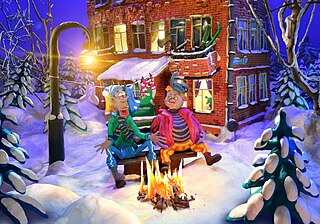
Claymation, sometimes called clay animation or plasticine animation, is one of many forms of stop-motion animation. Each animated piece, either character or background, is "deformable"—made of a malleable substance, usually plasticine clay.

Cutout animation is a form of stop-motion animation using flat characters, props and backgrounds cut from materials such as paper, card, stiff fabric or photographs. The props would be cut out and used as puppets for stop motion. The world's earliest known animated feature films were cutout animations, as is the world's earliest surviving animated feature Die Abenteuer des Prinzen Achmed (1926) by Lotte Reiniger.

Walt Disney Animation Studios (WDAS), sometimes shortened to Disney Animation, is an American animation studio that creates animated features and short films for The Walt Disney Company. The studio's current production logo features a scene from its first synchronized sound cartoon, Steamboat Willie (1928). Founded on October 16, 1923, by brothers Walt Disney and Roy O. Disney after the closure of Laugh-O-Gram Studio, it is the longest-running animation studio in the world. It is currently organized as a division of Walt Disney Studios and is headquartered at the Roy E. Disney Animation Building at the Walt Disney Studios lot in Burbank, California. Since its foundation, the studio has produced 63 feature films, from Snow White and the Seven Dwarfs (1937) to Moana 2 (2024), and hundreds of short films.

Animal Logic is an Australian animation and visual effects digital studio based at Disney Studios in Sydney, New South Wales in Australia, Vancouver in Canada, and Rideback Ranch in Los Angeles, California. Established in 1991, Animal Logic has produced visual effects and animation for feature films such as the Academy Award-winning Happy Feet, Legend of the Guardians: The Owls of Ga'Hoole, Walking with Dinosaurs 3D,The Lego Movie andPeter Rabbit. The company was also recognised for its work as lead visual effects vendor on Baz Luhrmann's The Great Gatsby, which won Outstanding Achievement in Visual Effects at the 3rd AACTA Awards ceremony. In 2018, Peter Rabbit was presented with a range of accolades, including the AACTA Award for Best Visual Effects or Animation, and Australian Production Design Guild Awards (APDG) in Visual Effects Design and Drawing, Concept Illustration & Concept Models for Screen. Most recently, the company has produced work for the Warner Animation Group's The Lego Movie 2: The Second Part and Marvel Studios' Captain Marvel. It is a subsidiary of Netflix.

Adobe Flash animation is an animation that is created with the Adobe Animate platform or similar animation software and often distributed in the SWF file format. The term Adobe Flash animation refers to both the file format and the medium in which the animation is produced. Adobe Flash animation has enjoyed mainstream popularity since the mid-2000s, with many Adobe Flash-animated television series, television commercials, and award-winning online shorts being produced since then.
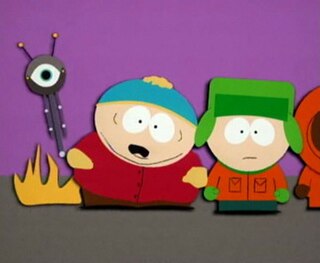
"Cartman Gets an Anal Probe" is the series premiere of the American animated television series South Park. It originally aired on Comedy Central in the United States on August 13, 1997. The episode introduces child protagonists Eric Cartman, Kyle Broflovski, Stanley "Stan" Marsh and Kenneth "Kenny" McCormick, who attempt to rescue Kyle's adopted brother Ike from being abducted by aliens.
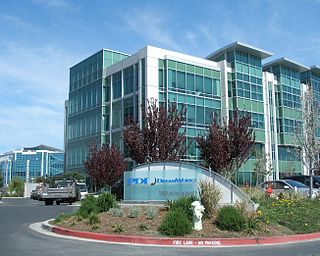
Pacific Data Images (PDI) was an American computer animation and visual effects production company based in Redwood City, California, that was bought by DreamWorks SKG in 2000. It was renamed PDI/DreamWorks and was owned by DreamWorks Animation.
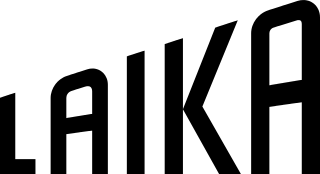
Laika, LLC is an American production company specializing in stop-motion animation and forthcoming live-action feature films, commercial content for all media, music videos, and short films. The studio is best known for its stop-motion feature films Corpse Bride, Coraline, ParaNorman, The Boxtrolls, Kubo and the Two Strings, and Missing Link. It is owned by Nike co-founder Phil Knight and is located in Hillsboro, Oregon, part of the Portland metropolitan area. Knight's son, Travis Knight, acts as Laika's president and CEO.
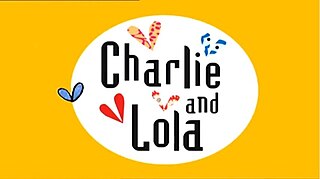
Charlie and Lola is a British animated children's television series based on the Charlie and Lola children's picture book series by Lauren Child, produced by Tiger Aspect Productions for CBeebies. It ran for 3 series from 7 November 2005 to 24 April 2008, winning multiple BAFTA Children's Awards throughout its run. The animation uses a collage style that emulates the style of the original books.

Nora Twomey is an Irish animator, director, screenwriter, producer and voice actress. She is best known as the co-founder of Cartoon Saloon, alongside Tomm Moore and Paul Young, an animation studio and production company, based in Kilkenny City, Ireland. She is best known for co-directing The Secret of Kells and directing The Breadwinner. Her work on both films earned Academy Award nominations for Best Animated Feature.
Locomotion was a Latin American cable channel dedicated to anime and animated shows targeting primarily an 18–34 audience, broadcasting movies, TV series and shorts. It was launched on November 1, 1996, and was closed down on July 31, 2005. It was also broadcast in Portugal through Cabovisão and TVCabo, and in Spain by satellite TV provider Vía Digital until 2003 due to administrative reasons with the TV operator.

The Amazing World of Gumball is an animated sitcom created by Ben Bocquelet for Cartoon Network. The series follows the lives of 12-year-old Gumball Watterson, an anthropomorphic blue cat, and his adoptive goldfish brother Darwin, who attend middle school in the fictional city of Elmore, California. They often find themselves in various shenanigans around the city, during which they interact with fellow family members—younger sister Anais, mother Nicole, and father Richard—along with an extended supporting cast of characters.

Paperman is an American black-and-white computer-cel animated romantic comedy short film produced by Walt Disney Animation Studios. Directed by John Kahrs, it blends traditional and computer animation, and features the voices of Kahrs and Kari Wahlgren in the leading roles.

Craig of the Creek is an American animated television series created by Matt Burnett and Ben Levin for Cartoon Network. The show's pilot episode debuted directly on the TV on December 1, 2017. The series premiered online on February 19, 2018, with a double-premiere event airing on March 30, 2018.
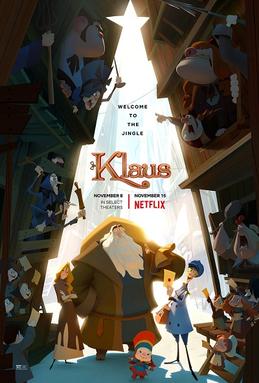
Klaus is a 2019 animated Christmas adventure comedy film written and directed by Sergio Pablos in his directorial debut, produced by his company The SPA Studios and distributed by Netflix. Co-written by Zach Lewis and Jim Mahoney, and co-directed by Carlos Martinez Lopez, the traditionally animated film stars the voices of Jason Schwartzman, J.K. Simmons, Rashida Jones, Will Sasso, Neda Margrethe Labba, Sergio Pablos, Norm Macdonald, and Joan Cusack. Serving as an alternate origin story of Santa Claus independent from the historical Saint Nicholas of Myra and using a fictional 19th-century setting, the plot revolves around a postman stationed in an island town to the Far North who befriends a reclusive toymaker (Klaus).
Joseph Wallace is a BAFTA Cymru-nominated film and animation director based in the UK. He uses stop-motion puppet and cut-out animation techniques to produce short films and music videos.

















